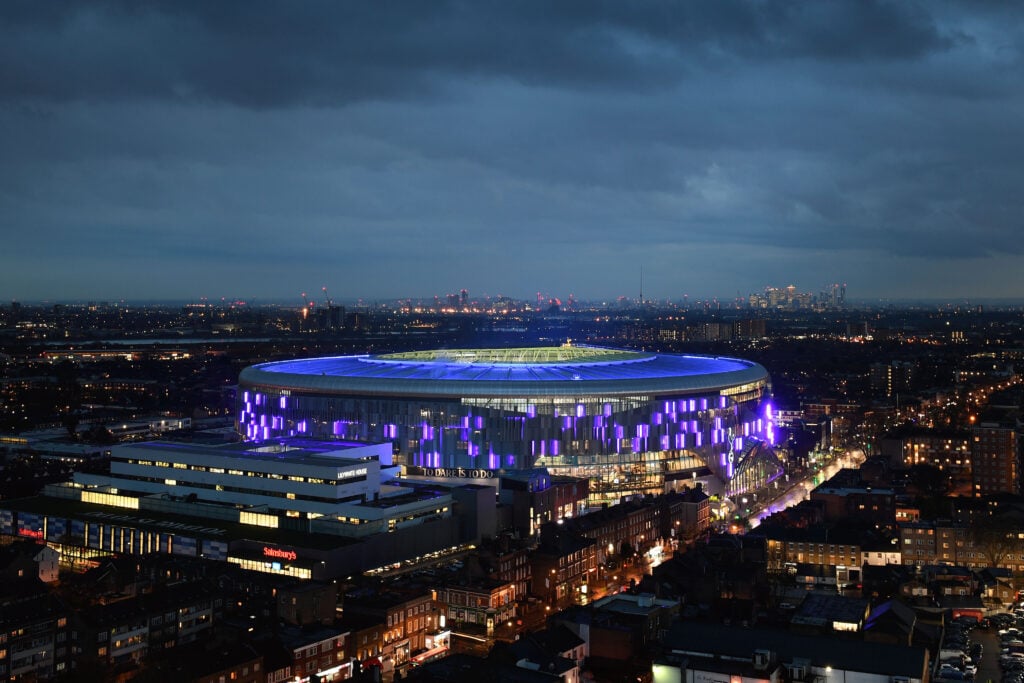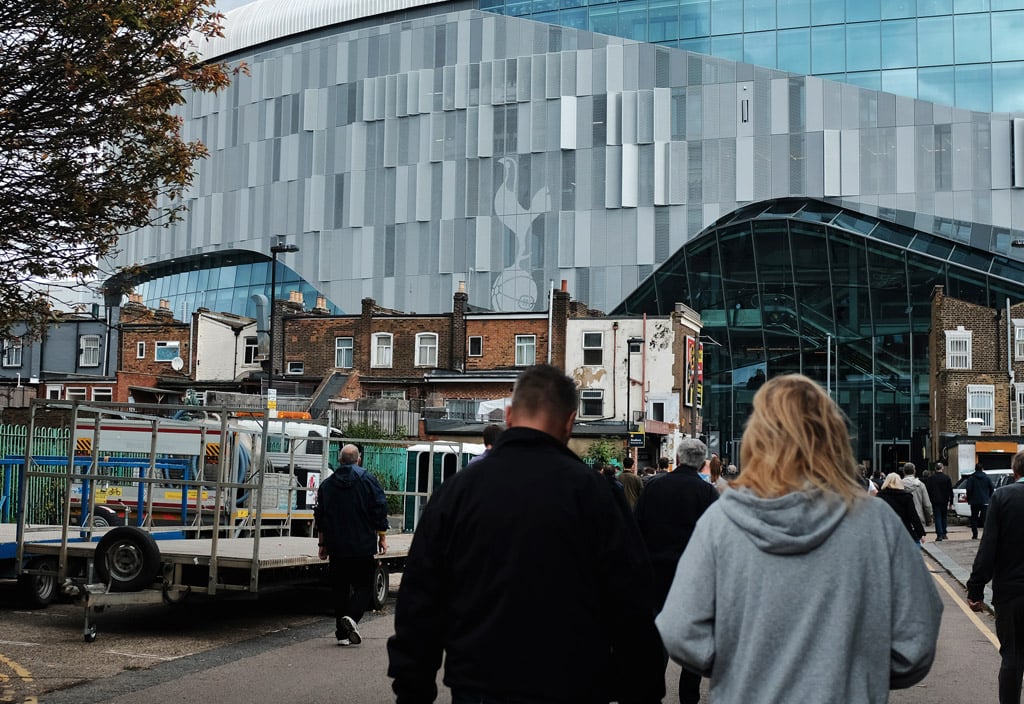Tottenham Hotspur now play in one of the finest football venues in the world, but how and when was the Tottenham Hotspur Stadium built, where did Spurs play before, and what does the facility have to offer? We’ve got all the information you need right here.
Spurs currently own the largest club stadium in London, and are the envy of the world of football thanks to the state-of-the-art stadium. Thankfully, of late, Ange Postecoglou appears to have turned the ground into something of a fortress, too, and long may it continue.
Stadium Name: Tottenham Hotspur Stadium
Year Opened: April 2019
Capacity: 62,850

A brand new stadium
The development of the Tottenham Hotspur Stadium was a significant project for the club, and the stadium officially opened in April 2019, at a rough cost of around £1bn.
The construction of the Tottenham Hotspur Stadium began in 2015 after the demolition of the old White Hart Lane stadium. The project took around four years to complete, but it was worth the wait.
The Tottenham Hotspur Stadium is known for its modern design and state-of-the-art facilities. It includes a retractable pitch that can reveal an artificial surface underneath, allowing the venue to host non-football events. The stadium also features a large single-tier South stand, providing an excellent view for spectators.
In addition to hosting Tottenham Hotspur’s home matches, the stadium is designed to host a variety of events, including NFL games, boxing matches, and music concerts. This has created immense commercial success for the club, giving them a stable financial platform to build upon, especially in light of Financial Fair Play regulations, earning praise for Spurs chairman, Daniel Levy.
Interestingly, despite long-standing rumours and discussions, the stadium has not been tied to a big sponsorship deal, meaning the naming rights are still up for grabs, should the club choose to go down that route.
As per the club’s official website, the intention when designing this stadium was to “bring fans closer” to the action, with shorter distances from the front row to the touchline than a standard ground. Away from the pitch, there are over 60 food and drink outlets dotted around the stadium, including Europe’s longest bar, The Goal Line.

History of White Hart Lane
White Hart Lane was the historic home stadium of Tottenham Hotspur Football Club before the construction of the new Tottenham Hotspur Stadium. The iconic venue hosted Tottenham’s home games for over 118 years, having officially opened in 1899.
Over the years, White Hart Lane underwent several renovations and expansions. The stadium’s final seating capacity was around 36,284. White Hart Lane witnessed numerous memorable moments in Tottenham Hotspur’s history, including domestic and European successes.
After the completion of the 2016-2017 football season, White Hart Lane was demolished to make way for the construction of the new Tottenham Hotspur Stadium. The decision to build a new stadium was driven by the desire to modernise facilities and increase seating capacity.
The decision to build the new stadium on the same site as White Hart Lane allowed Tottenham Hotspur to maintain its historical connection to the area while providing a state-of-the-art facility for the future.

How to get to Tottenham Hotspur Stadium
Tottenham Hotspur Stadium is located in North London, and there are several transportation options to reach the stadium. Please note that transportation details may change, so it’s advisable to check for the most up-to-date information if you are planning a trip.
The stadium is accessible via public transportation, and the nearest London Underground station is White Hart Lane, which is served by the Overground line. Trains to White Hart Lane station are also available from Liverpool Street station. Multiple bus routes also operate in the vicinity of the stadium, providing additional transportation options.
If you prefer to drive, the stadium is accessible by car. However, parking near the stadium may be limited, and it’s recommended to check for available parking options in advance. Cycling to the stadium is also an option, and there are ample bike parking facilities available. If you are in the local area, walking to the stadium is a possibility. Signs and directions will guide you from nearby transport hubs.

Stadium tours
The Tottenham Hotspur Stadium is not only a great place to watch football. There are also a range of other activities you can partake in around the ground, that will give you access to the inner workings of the club, and give you a bird’s eye view of the pitch.
Visitor attractions include a range of different stadium tours. When booking in advance, a standard stadium tour could cost as little as £14, but there are also matchday tours (starting at £35 per person), Legends Tours (starting at £49.50 per person), and technical tours (starting at £115 per person). You can find all the information you need and book a tour here.
If you’re feeling brave, you can also take on the Dare Skywalk experience, which would see you standing on the very top of the Tottenham Hotspur Stadium and walking across the structure. Prices start at £28 per person, or a family ticket price starts at £112. You can find all details and make a booking here.
Stadium address
Tottenham Hotspur Stadium, 782 High Road, London, N17 0BX